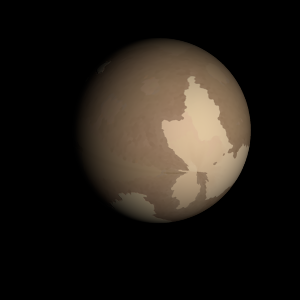|
|
Space Astro
|
Info for exoplanet "Aqan Ujer-o"
| Scientific (actual) data |
|---|
| Name | Kepler-1637 b |
| Planet status | Confirmed |
| Radius | 0.079 |
| Orbital period | 6.1096 |
| Discovered | 2016 |
| Updated | 2021-02-05 |
| Tconj | 2454970 |
| Publication | Announced on a website |
| Detection type | Primary Transit |
| Alternate names | 2MASS J18485684+4809154 b, K05827.01, KIC 10777591 b, KOI-5827 b, KOI-5827.01, WISE J184856.83+480915.3 b |
| Star name | Kepler-1637 |
| Right ascension | 282.24° |
| Declination | 48.15° |
| Mag j | 12.142 |
| Mag h | 11.852 |
| Mag k | 11.778 |
| Star distance | 506 |
| Star metallicity | 0.07 |
| Star mass | 1.02 |
| Star radius | 1.02 |
| Star age | 4.17 |
| Star temperature | 5789 |
| Star alternate names | 2MASS J18485684+4809154, KIC 10777591, KOI-5827, WISE J184856.83+480915.3 |
| Wikipedia article | Kepler-1637 b |
Back
| |
| Fictional info (?) |
|---|
| Suggested name | Aqan Ujer-o |
| Planet type | Cold planet |
| tricky ride. |
| Atmosphere | Nitrogen | 75% |
| Argon | 14% |
| Molecular hydrogen | 4.9% |
| Xenon | 3.8% |
| Hydrogen | 0.75% |
| Ammonia | 0.72% |
| Ethane | 0% |
| Atmospheric pressure | 0.18 bar |
 |
| No known satellites |
| Google search for Aqan ujer-o |
|
Website by Joachim Michaelis
|
|
|
|